Legacy systems – Keep the source
Improve the working life of your legacy source by increasing the sensitivity of your detector It can be concerning when […]
Energy saving is a great way to reduce your company’s costs and increase your competitiveness. In this three-part blog series, we cover the five utility areas where companies can save energy and money, specifically within the heavy industries (Chemical, Oil & Gas and Power & Energy). Our first post covered steam and compressed air, and we will now dive into heating and cooling systems.
In today’s market, it’s common to find a multitude of industry-specific heating processes and technologies. That’s why customized approaches and specific measured values are needed to assess their performance and improve their output.
Energy loss is typically high in boilers and furnaces due to inefficient combustion, incorrect operation or poor maintenance and servicing. Measuring the level of efficiency is therefore the best way to prevent loss and cut energy consumption by up to 55%. By monitoring fuel consumption, air combustion, flue gas temperature or the transmission rate of thermal energy you can:
• Identify and quantify energy loss, such as no-load or partial-load operation of the burner
• Assess and optimize degree of boiler efficiency and consumption
• Minimize maintenance costs and downtimes
• Quantify improvement measures such as the pre-heating of combustion air
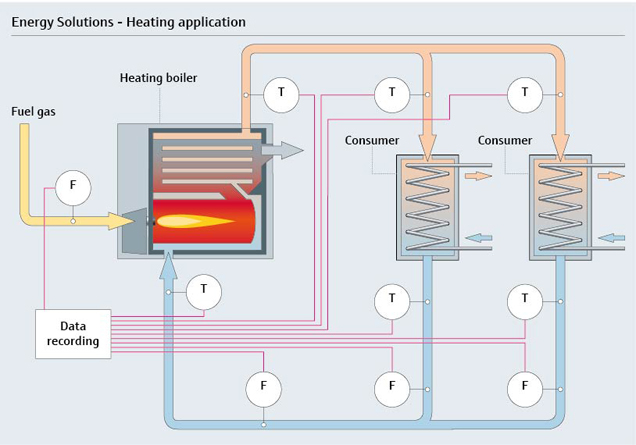
Cooling has even more potential for savings than heating. In many industries, the production of cooling energy accounts for roughly 10% of electricity consumption, so even minor energy reductions can mean significant cost savings.
An efficient cooling system requires more than just efficient components-the configuration and operation of the system must also be considered. Often, cooling systems are developed based on a customer’s specific needs. An individual analysis of the supply and demand is needed to identify the ideal operating point, which means electricity (watt) meters are not sufficient in monitoring total energy demand reliably.
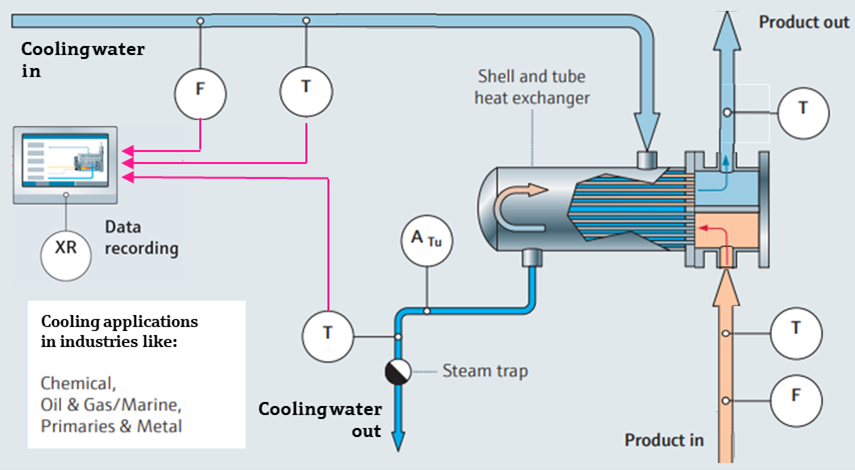
Cooling happens in a variety of ways throughout industrial processes. One common area where many efficiencies can be achieved is the cooling water process. In the example above, we can see a product entering the heat exchanger via the tube side where the hot product flows through a bundle of tubes. On the shell side, we have water entering and flowing over the tubes to cool the product as it flows through the cooling water loop. The cooling water flows continuously through the loop, eventually making its way back to a cooling tower. Here, water is recycled, cooled, and cleaned using various chemicals. It is critical that this water is cleaned and cooled properly using reliable technologies to provide optimum cooling in the heat exchangers.
To enhance your cooling water process and your overall cooling system further you can implement the following maintenance measures:
• Manage proper flow and pressures
• Minimize leaks
• Avoid deposit buildup in cooling tower and pipes
• Analyze water chemistry to ensure certain quality parameters are met
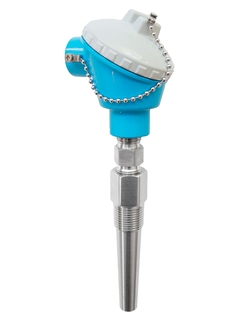
Temperature measurement
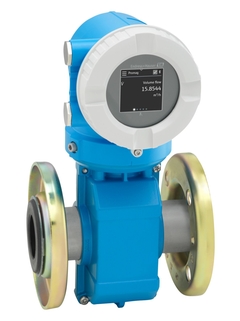
Flow measurement (coolants)
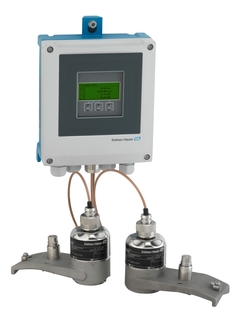
Flow measurement (refrigerants)
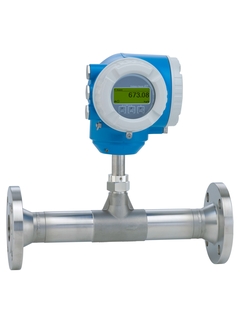
Flow measurement
In this part two of our Utility Management Solutions series, we have highlighted ways to cut energy consumption in your heating and cooling systems by implementing our energy saving solutions, helping save you time and money. Stay tuned for our next section in the Utilities Management Solutions series: Industrial gases.
To see our full list of recommended products, download our heating and cooling systems product lists!
Improve the working life of your legacy source by increasing the sensitivity of your detector It can be concerning when […]
The measurement of TOC (total organic carbon) in water is of vital importance to a multitude of industries that need […]
Navigating today’s uncertain economic and regulatory landscape requires market agility, achievable on a foundation of technological preparedness and strategic vision […]